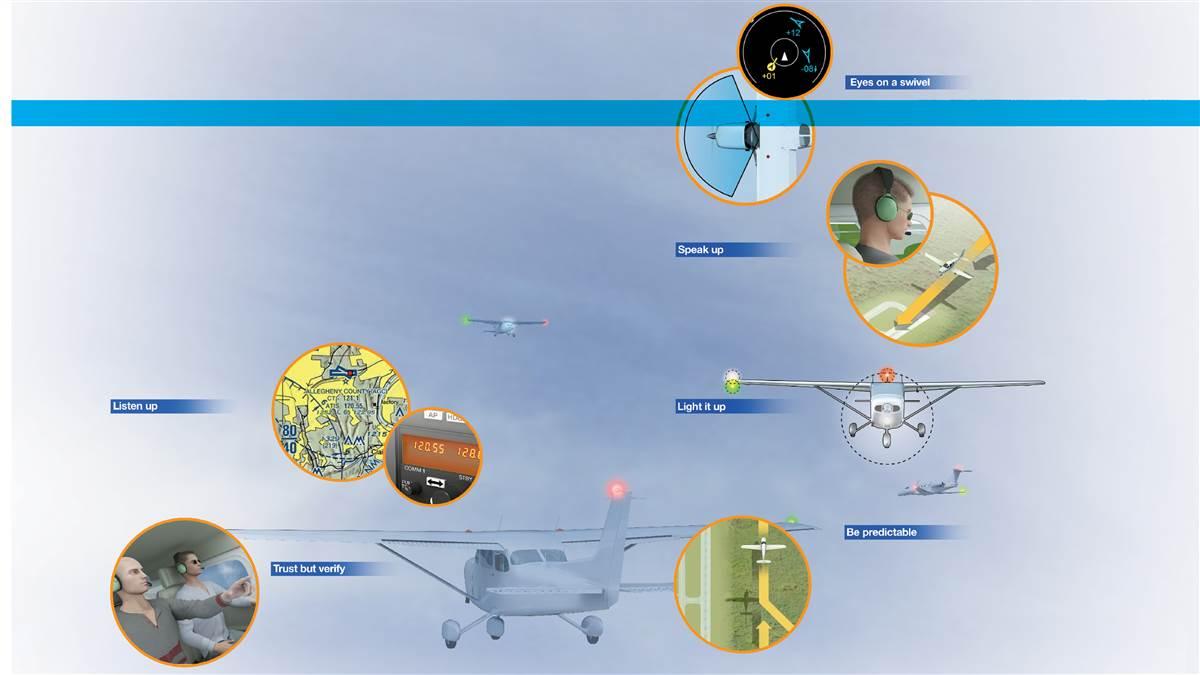Collision avoidance
Look and listen

Their rare status doesn’t lessen midairs’ terrible outcomes. Fortunately, we know from studying accident data where and when they’re more likely to occur, and we can use that knowledge to reduce the risk of a collision.
Statistically, midairs are more likely to occur within five nautical miles of an airport, in daylight visual flight rules conditions, and at or below 3,000 feet above ground level. This translates to approaching, flying in the pattern, or departing the pattern at an airport.
When approaching or departing an airport, we must do whatever we can to see and be seen.
Listen up
Where is traffic likely to be at any given point? Tune in the automated weather observation service (AWOS) or the automatic terminal information service (ATIS) to find out the wind direction and get a clue as to which runway is in use. Then verify by listening to the unicom or the control tower.
Trust but verify
If opposing traffic tells you they’re on the crosswind leg, look for that traffic. If the tower controller tells you the airplane ahead of you in the pattern is on a short final and you can begin your base leg, verify that. Two or three sets of eyes is better than one.
Eyes on a swivel
You’re at a critical phase in the see-and-avoid operation. Don’t stop looking. Don’t let distractions such as taking photos or passenger chatter degrade your focus. Traffic depicted on ADS-B displays can be a big help, but don’t fixate on those images to the exclusion of everything else.
Speak up
At a nontowered airport, frequent position reports help you and other pilots keep situational awareness of where everyone is. Whether the pattern is busy or not, you should report your position entering the pattern and update your crosswind, downwind, base, final, and short final legs—but keep those calls succinct.
Light it up
Help other aircraft spy your airplane. Put on all navigation and landing lights. (Your airplane’s anticollision light should be on throughout the flight.) Leave them on as long as needed.
Be predictable
If approaching a nontowered airport, enter the pattern at a 45-degree angle to the downwind leg. Instrument flights practicing approaches in VFR conditions or on an instrument flight plan will frequently enter on a straight-in approach. Listen for those calls and keep right-of-way rules top of mind (see “Right of Way Rules”). As you turn base to final, check the final approach for errant traffic or instrument traffic you did not previously detect.




